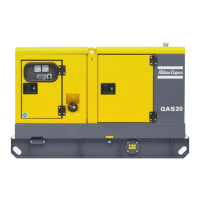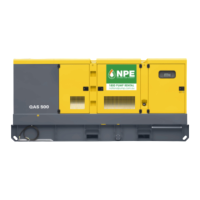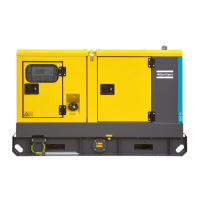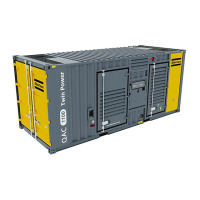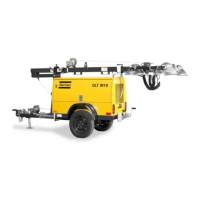- 61 -
6 Checks and trouble
shooting
6.1 Engine troubleshooting
The table below gives an overview of the possible
engine problems and their possible causes.
The starter motor turns the engine too slowly
– Battery capacity too low.
– Bad electrical connection.
– Fault in starter motor.
– Wrong grade of lubricating oil.
The engine does not start or is difficult to start
– Starter motor turns engine too slowly.
– Fuel tank empty.
– Fault in fuel control solenoid.
– Restriction in a fuel pipe.
– Fault in fuel lift pump.
– Dirty fuel filter element.
– Air in fuel system.
– Fault in atomisers.
– Cold start system used incorrectly.
– Fault in cold start system.
– Restriction in fuel tank vent.
– Wrong type or grade of fuel used.
– Restriction in exhaust pipe.
Not enough power
– Restriction in a fuel pipe.
– Fault in fuel lift pump.
– Dirty fuel filter element.
– Restriction in air filter/cleaner or induction
system.
– Air in fuel system.
– Fault in atomisers or atomisers of an incorrect
type.
– Restriction in fuel tank vent.
– Wrong type or grade of fuel used.
– Restricted movement of engine speed control.
– Restriction in exhaust pipe.
– Engine temperature is too high.
– Engine temperature is too low.
Misfire
– Restriction in a fuel pipe.
– Fault in fuel lift pump.
– Dirty fuel filter element.
– Air in fuel system.
– Fault in atomisers or atomisers of an incorrect
type.
– Fault in cold start system.
– Engine temperature is too high.
– Incorrect valve tip clearances.
Never perform a test run with
connected power cables. Never
touch an electrical connector
without a voltage check.
When a failure occurs, always
report what you experienced before,
during and after the failure.
Information with regard to the load
(type, size, power factor, etc.),
vibrations, exhaust gas colour,
insulation check, odours, output
voltage, leaks and damaged parts,
ambient temperature, daily and
normal maintenance and altitude
might be helpful to quickly locate
the problem. Also report any
information regarding the humidity
and location of the generator (e.g.
close to sea).

